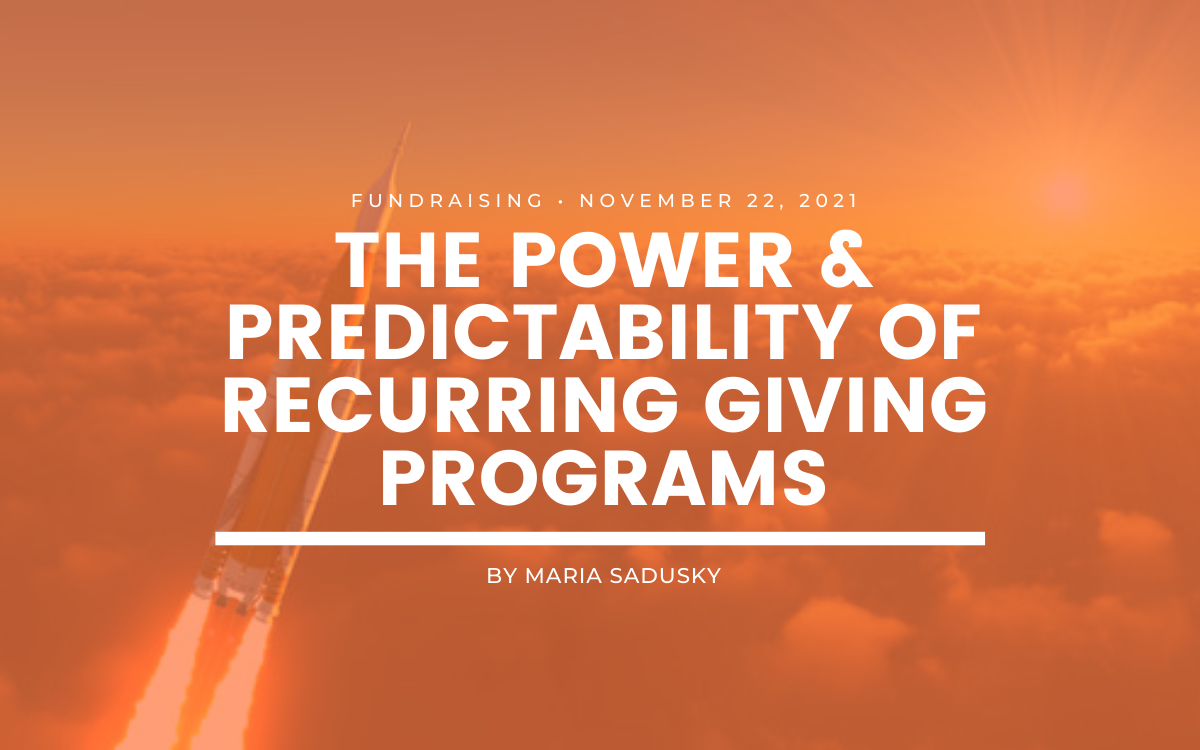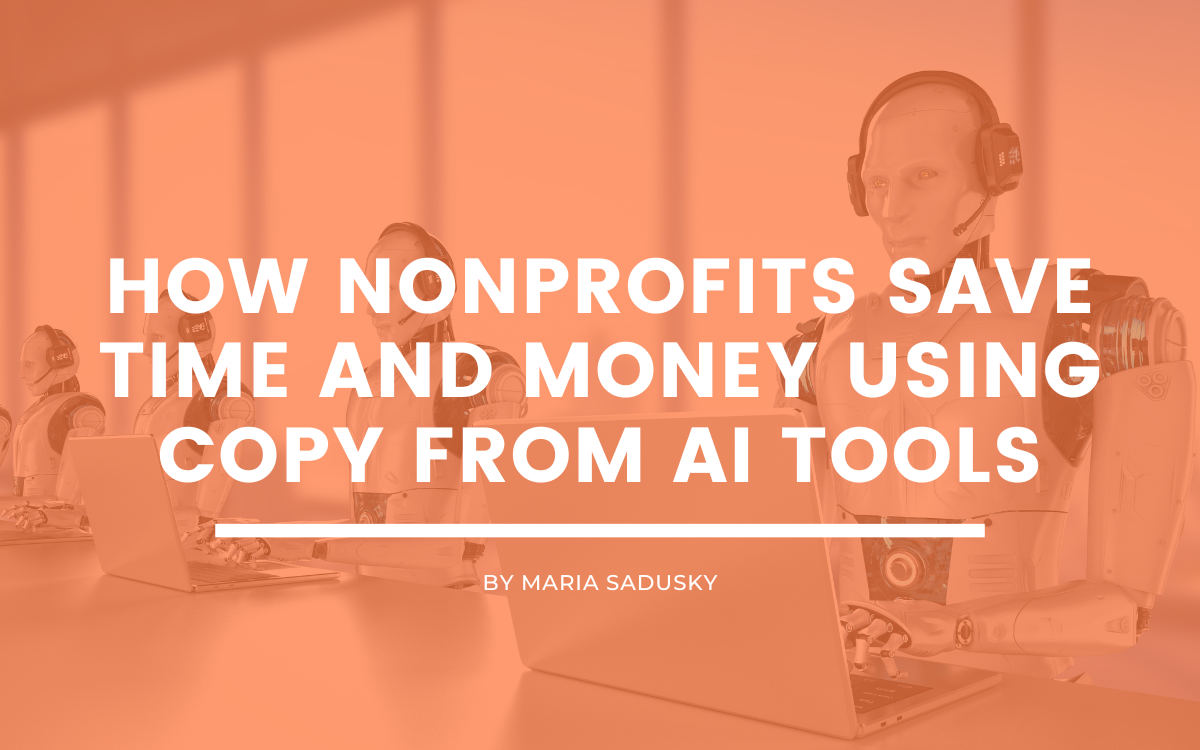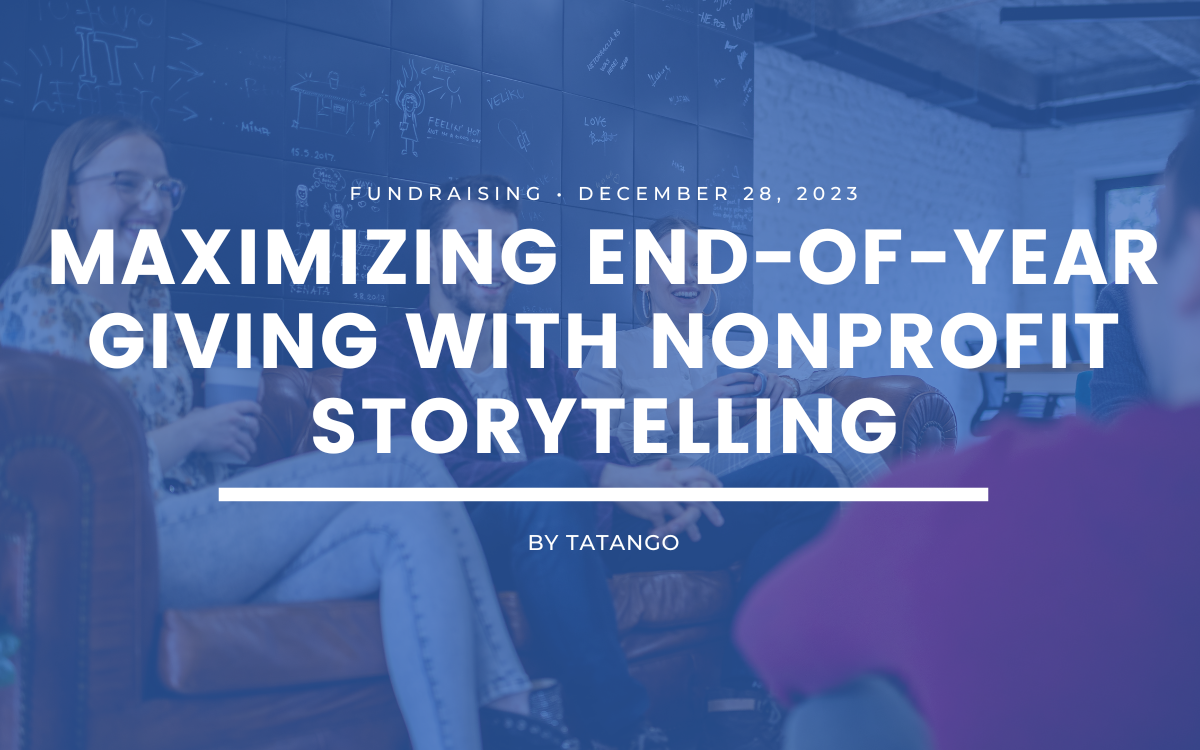The Power & Predictability of Recurring Giving Programs
3 min to read ✭ In case you missed it, we recapped one of the most popular webinars we’ve had to date! Learn about how nonprofits can build, launch and sustain a recurring giving program.
The Keys to Launching a Recurring Giving Program
As we learned from our webinar, there is a whole lot of power and predictability behind a strong recurring giving program.
Based on industry data, recurring giving programs can lead to an increase in total donor lifetime value by 487%, an increase in average donor retention by 50%, and 52% of millennials are more likely to give monthly over a large, one-time donation. However, these stats are only the beginning. In this free webinar, we talked about these recurring giving programs in action. How can your nonprofit’s team align on campaign creative? What are the best practices to remain within budget? What channels are best to market your individual program? Let’s find out.
Why Recurring Giving?
You’ve heard the statistics, but here are a couple more reasons why your organization should implement a recurring giving program:
- It’s affordable: By giving donors lower monthly options, your donor profile is immediately diversified
- It’s a community: Recurring givers are much more likely to share your cause with others.
- It leads to sustained support: 13 Months is the average time that a recurring giver stays at the initial gift size.
The Keys to Launching a Recurring Giving Program
After managing 200+ nonprofit fundraising campaigns we can confidently say that aligning on your creative and messaging, creating a strong campaign landing page, choosing the right channels, and sticking to a well-planned timeline are the keys to success.
Create a Message That SERVES
Aligning on your campaign creative and messaging is the first step. Your campaign message is the center of truth from which everything else stems. Give time to make sure it is genuine and real. We recommend creating a message that SERVES your audience- Simple, Emotional, Relevant, Video, Effective, Stories.
Next, there are a couple of key components that should be included in your campaign’s build.
1. Themed Landing Page
A core, campaign-branded landing page is a MUST for any recurring giving program.
2. Flagship Video
The most effective way to deliver your message. This can be a video you might already have on hand about your organization’s impact.
3. Crystal Clear Impact Metrics
As competition for recurring donors increases, clear impact metrics are more important than ever before.
4. Private Tribe
A private group (Facebook) that makes your donors feel like they belong in this community of like-minded peers.
5. Incentivize Engagement
Let your donors know they are as valuable as they are by going above and beyond with direct mail.
Recurring Giving Campaign Landing Page
One thing to keep in mind when building your Recurring Giving Program is that you want to make sure you have a themed landing page that utilizes storytelling. Some ways to do that are by having videos, image assets, and clear impact metrics that show your donors the impact their gift will have on your organization.
Next, you want to make your donors feel like they are a part of a community. You can do this by creating a private group on Facebook or a specific email list for your recurring givers. Finally, incentivize them throughout the entire engagement. Whether that is giving them a welcome gift, quarterly progress updates containing stories from the field, or photos and videos of the children and communities they’ve impacted firsthand.
How to Market and Scale Recurring Giving Programs
First things first. Our experts suggest you choose the marketing channels that you will use to launch your campaign. We’ve highlighted 7 of our favorites:
- Email Marketing
- Facebook and Instagram Ads
- Organic Social Media Marketing
- Youtube and Display Ads
- Google Ad Grants
- Direct Outreach
- Peer-to-Peer Empowerment
In the webinar, we walked through each of these channels and how to best use them. Choose your best-performing channels by watching the recording!
A Timeline for Recurring Giving Programs
Month 1: Develop program creative and storytelling framework. Next, Define the persona of your donors and then create a type of branding for your creative. In this first month, it is also important to get tracking set up for your campaign so you can look back to see what worked and what didn’t work
Month 2: It’s time for the email series. Your first email series will be the welcome series that warms your audience for what is to come with the mission and story framework. You might also launch a one-time monthly series during the second month. This is also a good time to develop the landing page showcasing the “why” of your mission.
Month 3: This is a good time to do a soft launch of your program to current donors! Choose your marketing channels and campaign social strategy and start marketing!
Key Takeaways
In summary, this webinar talked about making monthly giving a priority. Why? Because it yields more sustained support, a diversified donor base, and higher retention rates. Treat your program like a membership – your donors receive impact in return for their support. Donors really want to be a part of the community so it is important to show them why their support matters. Take time with your story-telling so that your landing page, email series, and name come easier. Finally, once you have your plan to market and scale you are good to go!





